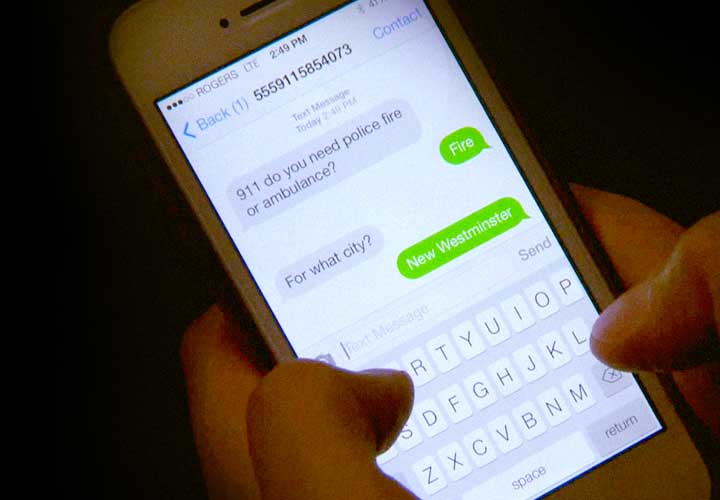9-1-1 text service for hearing/speech impaired
9-1-1 text service for hearing/speech impaired expands to more communities

Northern Vancouver Island is now the second region in B.C. to provide people with hearing and speech impairments with the ability to communicate with 9-1-1 call-takers through a special text service called T9-1-1. The service is provided by E-Comm—the 9-1-1 answer point serving Comox Valley, Strathcona, Mt. Waddington, Alberni-Clayoquot and Powell River (excluding Lasqueti Island), in addition to a portion of the Nanaimo Regional District (School District 69).
North Island 9-1-1 Corporation President Larry Samson, whose organization oversees 9-1-1 service on northern Vancouver Island, says T9-1-1 provides a better way for the hearing and speech impaired to communicate with police, fire and ambulance call-takers in an emergency. “I encourage residents with hearing or speech impairments to register for T9-1-1 with their wireless providers and to learn how the service works and what to expect if they need to use it.”
“T9-1-1 is an important service for our community and we want to make sure people know that it exists and that they feel comfortable using it in an emergency.”
Janice Lyons,
Head of Interpreting Services for WIDHH
When E-Comm receives a 9-1-1 call from a person who is Deaf, Hard-of-Hearing or Speech Impaired (DHHSI) who has pre-registered for the service, an alert will trigger at the 9-1-1 centre to indicate there is a DHHSI caller on the line. The 9-1-1 call-taker will then launch the special messaging system, allowing them to communicate with the caller through a text session. This will ensure they get the emergency service they need.
E-Comm was the first 9-1-1 call centre in Canada to launch T9-1-1 and has been working closely with the Western Institute for the Deaf and Hard of Hearing (WIDHH) to help raise awareness and understanding of the service since it was first launched in Metro Vancouver in 2014. The two organizations have collaborated on a number of initiatives to explain how T9-1-1 works, how to register and in the event of an emergency, understand what to expect. These educational materials, including a user guide and registration tips, are available free of charge at ecomm911.ca. A step-by-step video in American Sign Language (ASL), which was released in May in support of Speech and Hearing Awareness month, is also available on E-Comm’s YouTube channel.

“T9-1-1 is an important service for our community and we want to make sure people know that it exists and that they feel comfortable using it in an emergency,” explains Janice Lyons, head of Interpreting Services for WIDHH. “The video produced by E-Comm includes detailed information that I—as a Deaf person—was able to interpret into ASL to better explain how the service works.”
The video explains how to register and how the system works including the need to dial 9-1-1 first like any other caller in order to establish a voice network connection. This will provide 9-1-1 call-takers with critical information such as the caller’s telephone number and general location. It also allows call-takers to listen to background noises which can be very helpful in assessing an emergency situation.
For people without hearing and speech impairments, voice calling remains the only way to communicate with 9-1-1 services as T9-1-1 is available only to members of the DHHSI community. Text messages sent directly to the digits “9-1-1” will not reach emergency services anywhere in Canada. Text to 9-1-1 for the public-at-large is anticipated in the future as the nationwide 9-1-1 infrastructure evolves.
Members of the DHHSI community should visit TextWith911.ca to register their cellphones with their wireless service provider and to learn more about how the system works.


